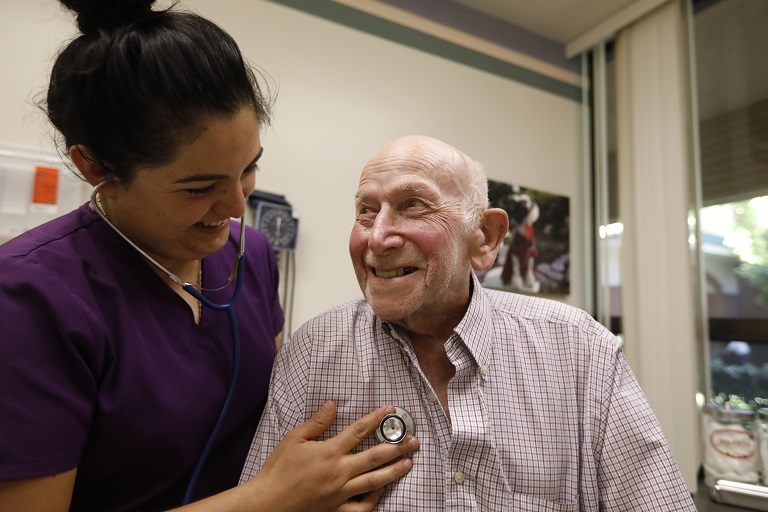ONC Report Examines Use of Electronic Health Records (EHRs)
More home health agencies (HHAs) than skilled nursing facilities (SNFs) have adopted electronic health records (EHRs), says a new data brief from The Office of the National Coordinator for Health Information Technology (ONC). Both were more likely to engage in other interoperability domains than to integrate the patient health information they received from outside facilities.
This research surveyed more than 1,000 facilities rendering long-term and post-acute care (LTPAC) services. Of the facilities surveyed, 1,000 self-identified as a SNF and 1,004 as an HHA, according to the data brief.
Electronic Health Record Adoption and Interoperability among U.S. Skilled Nursing Facilities in 2017 shared these and other key findings.
More HHAs (78 percent) adopted EHRs than SNFs (66 percent) in 2017.
A majority of SNFs and HHAs have adopted EHRs. However, EHR adoption rates were higher among HHAs than SNFs. A majority of HHAs that have an EHR used their EHRs for both reconciling and recording medications. HHAs were also more likely to use these functions than SNFs were.
Only 36 percent of HHAs and 18 percent of SNFs were able to integrate patient health information received from outside facilities. These facilities had greater engagement in other domains of interoperability.
When it comes to electronically sending or receiving health information, over half of HHAs and 41 percent of SNFs did so. Only 18 percent of SNFs reported that they integrate patient health information electronically received from outside sources.
Hospitals’ interoperability is at a similar level. While a large proportion send and receive health information electronically, fewer have the capability to electronically find or integrate data from outside sources.
HHAs (32 percent) and SNFs (37 percent) most commonly used their EHR to exchange health information.
Yet at least 43 percent of HHAs and 29 percent of SNFs used more than one method to exchange health information electronically.
HHAs and SNFs that use three methods of exchange are more likely to have information electronically available.
Facilities that used multiple methods of electronic exchange were more likely to engage in the four interoperability domains—sending, receiving, finding, and integrating health information received from outside sources—and were more likely to have information electronically available at the point of care. For example, SNFs that use an EHR, health information organization, and read-only access are twice as likely to have information available at the point of care than are SNFs that only use an EHR.
Although using multiple methods makes information more available, it also may make data exchange more complex and costly.
Nearly 40 percent of HHAs used telehealth technology to keep track of patients’ health between in-person visits.
HHAs need to use technology during in-home patient visits and to monitor patients between visits. Three-fourths of HHAs (72 percent) used mobile technology, and of those, 85 percent directly entered data into the EHR during patient visits. About four in 10 HHAs (37 percent) used telehealth. Use of telehealth technology did not vary by HHA ownership status (private vs. not) or location (urban vs. rural).
Recommendations
SNFs and HHAs are not eligible to participate in the Medicare and Medicaid Promoting Interoperability Programs, formerly known as the Medicare and Medicaid EHR Incentive Programs. However, the brief outlined two important building blocks to advancing health information exchange:
Implementing federal policies such as the IMPACT Act.
Making interoperability standards for standardized patient assessment data available through resources such as the CMS Data Element Library 1.
Policies that advance interoperability in post-acute care settings, wrote the brief’s authors, are critical to ensuring that HHAs and SNFs can meet future demand for services and address their patients’ complex health needs.
If you would like more information about EHR, please check out the CAST EHR Selection Tools.

Most Recommended
October 15, 2025
 Shutdown Week Three: Impact of Ongoing Closure on Affordable Housing
Shutdown Week Three: Impact of Ongoing Closure on Affordable Housing
December 10, 2025
Fiscal Year (FY) Funding 2026
October 07, 2025
Immigrant Workforce Matching Program Brings Workforce Relief
Recently Added
December 19, 2025
House Moves Forward on Affordable Housing Reforms
December 19, 2025
White House Cannabis EO Paves Way for Research, Access
December 19, 2025
LeadingAge Urges DHS to Maintain "Public Charge" Guardrails
December 18, 2025



